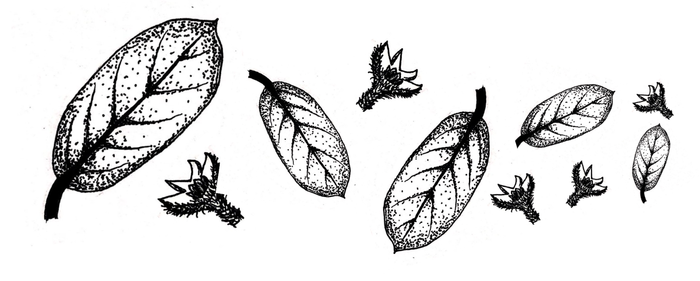Plant sales, green formals and clothing swaps: meet the students behind Green Week
Aoife O’Driscoll meets the students trying to raise awareness of climate change by a week-long ‘celebration of the environment’

The push for sustainability continues to increase, and many are going above and beyond to raise awareness on the importance of prioritising the environment. This week was no exception. Having started on Monday 2nd May and ending yesterday (8/5), the first university-wide, green officer-led Green Week spread the message across the city through a range of events.
The week was been made possible through the efforts of college green officers, representatives on JCRs who focus on environmental issues, along with other students passionate about the environment.
Katy Biggs-Williams, Girton's green officer studying Geography, says that a Green Week “was something that was already on my agenda, trying to increase the connections between colleges,” and that being able to get involved has “met all my expectations.” She was drawn to the JCR role from the desire to spread awareness. “I think it’s such an important issue; the way that we’re having an effect on the climate, on biodiversity, on all these aspects of the environment”, and stresses the need to “get involved, and try to make changes while we still can.”
Sylvia Lei, a second-year Education student at Churchill, has been involved in green events in her college before, and was excited at the opportunity to work on the collaborative project. She describes it as “an entire week to celebrate the environment and to raise awareness about it.” Whilst right now, the climate is a familiar topic, she mentions that “it’s easy to forget that just twenty years ago, that wasn’t the case,” which is why “you can never have enough events like this where you take some time to think about the environment, to talk about it.”
It seems astonishing how quickly the week has come to realisation when looking at the number of events scheduled. The idea only first came up a couple of weeks before the end of Lent term during a meeting open to green officers across all the colleges, where the conversation “moved naturally onto events and Green Week, and how people have been struggling with engagement,” says Charlie Barty-King, who has helped facilitate the process. From that point on, weekly drop-in meetings were arranged over Zoom, and the plans developed.
When asked about how they felt the process went, the responses were overwhelmingly positive. Charlie admits that it “happened exceptionally quickly, which is all the more impressive for the level of events and the graphics that have been produced.” The collaborative nature of the project seems to have helped. “It’s so much easier to get things done when you’re working in a big group, and with people with lots of ideas,” Katy says, as “everybody was really keen to get on board and share ideas.” Similarly, Sylvia confesses to being “in awe of everybody who’s come together.”
“It happened exceptionally quickly, which is all the more impressive”

The week boasts an impressive range of events, on both a university and college level. Sylvia, who designed the graphics for the week, explains how she colour-coded the timetable to categorise the different activities. “Speaker events, and panels where we invited guests were dark green, while light green was for more random Green events, like the Green Festival.” Yellow was chosen for social events, red for workshops, and outside events were in orange. “I feel really privileged to have done the graphics, because that gave me a deeper understanding of every event.”
As well as this, Sylvia led the Churchill green formal, and helped with the plant sale and clothes swap. In terms of deciding who would run which event, Katy says that, “you could chip in as much as you wanted really, but there was a lot of enthusiasm.” She signed up to lead the intersectional climate workshop, and assisted with the sustainable periods workshop and the vegan cooking class. Charlie took on a facilitator role, but says that he was helped by “the fact that I was a green officer before, and I’ve been involved in my student association since 2017.” Also involved with Cambridge Zero, he wants to support the green officers “from a perspective of trying to engage the proactive student leaders in a way that is supplementary to what they do.” All three seem enthused by the selection of events, with Katy confessing “if I could, I would have genuinely gone to every single event, because I think they’re all amazing.”
So what did they want to get out of the week? The general raising of awareness emerges as key — Sylvia hopes that the week helped “getting people to care about the environment.” Reflecting on the broad collection of events, Katy wishes that “people just realise that there are so many different ways you can connect with these issues, driving home the point that the environment encompasses everything we do - it’s so important in so many ways that it intersects with our lives.” Charlie also sees the week as the start of more wider intercollegiate collaborations between the green officers. Now, they are “much more a collective, than individual green officers. Regardless of anything else, that’s a great success, and that’s what I want to see moving forward.”
“There’s a lot of desire, people are really keen not to lose the momentum”
One thing which they seem certain on is that this is just the beginning. For Katy, the week has “set the way for a lot of other interconnected activities between the colleges and a much wider Green Week green awareness movement…there’s a lot of desire, people are really keen not to lose the momentum.” She draws attention to a recent formation of the Facebook page ‘Greenbridge’, created by green officer Clarissa Salmon as a platform to share any upcoming green-related events. Looking at change within the University, Charlie believes that “having a Green Week as a focus in term time is a really helpful impetus for the staff to have their own meetings.” He claims that “there are likely to be more, and the more people we can get engaged, the more we can show the university that this is a valuable thing.”
 News / Cambridge launches plan to bridge ‘town and gown’ divide27 October 2025
News / Cambridge launches plan to bridge ‘town and gown’ divide27 October 2025 News / Government announces £400m investment package for Cambridge25 October 2025
News / Government announces £400m investment package for Cambridge25 October 2025 News / SU announces vote on NUS affiliation17 October 2025
News / SU announces vote on NUS affiliation17 October 2025 News / Cambridge don appointed Reform adviser23 October 2025
News / Cambridge don appointed Reform adviser23 October 2025 Arts / Reflections on the Booker Prize 202528 October 2025
Arts / Reflections on the Booker Prize 202528 October 2025










